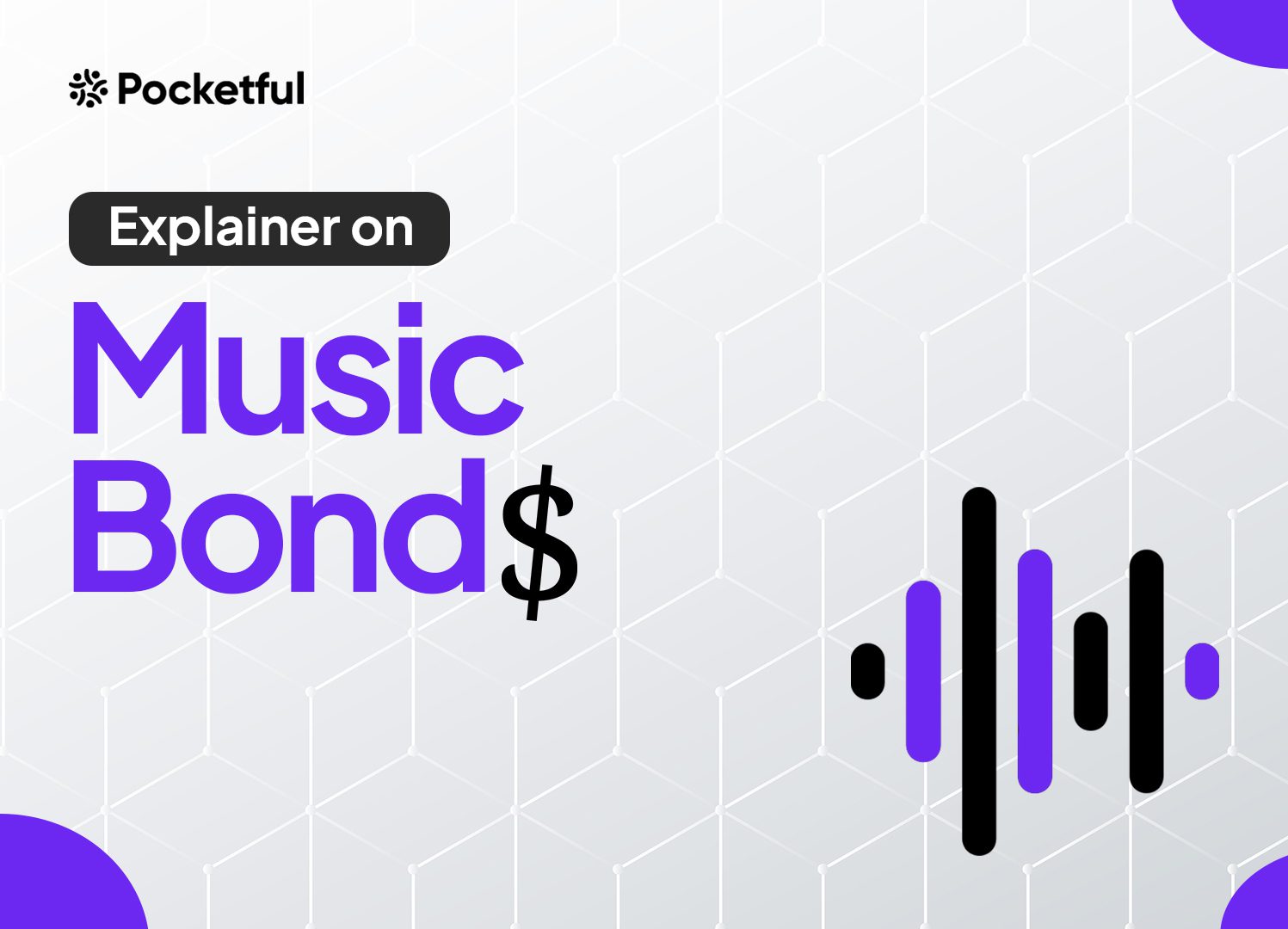| Type | Description | Contributor | Date |
|---|---|---|---|
| Post created | Pocketful Team | May-03-24 | |
| Update FAQs Formatting | Nisha | Feb-18-25 | |
| Update FAQs Formatting | Nisha | Feb-18-25 | |
| Update FAQs Formatting | Nisha | Feb-18-25 |

- Blog
- bowie bond
What Is Bowie Bond (Music Bonds) : History, Features, Advantages & Disadvantages


Have you ever heard of an investment that lets you earn money from your favorite songs? Buckle up, music lovers, because that is exactly what Music bonds are all about.
In this blog, we will delve into the fascinating history of Music bonds, from their birth with Bowie’s ingenious move in the 90s to their recent comeback fueled by the streaming revolution.
Bowie Bond Overview
Music Bonds, also known as Celebrity Bonds or Bowie Bonds, are a financial instrument linked to the music industry.
Investors purchase bonds that are backed by the future royalty earnings of an artist’s catalogue. Artists can access a lump sum money upfront by selling these bonds, without giving ownership of their music.
Royalty income, in the context of music bonds, is the stream of payments an artist earns when their music is used in several ways. Different sources of Royalty income are as follows:
- Mechanical Royalty – This is paid whenever a physical or digital copy of a song is reproduced, such as CD sales, downloads, or streaming services.
- Performance Royalty – Whenever a song is publicly performed whether in live concerts or through broadcasts (radio, TV), performance royalties are generated.
- Synchronization Royalty – This is paid when a song is used in combination with visual media such as movies, TV shows, commercials, or video games.
- Print Music Royalty – If sheet music or printed lyric books are created for the song, these royalties are triggered by their sale.
Investors get a return on their investment in the form of interest payments derived from the royalties generated by the artist’s music.
Essentially, it is a way for musicians to turn their music into a tradable asset and for investors to profit from the songs with a proven track record.
Furthermore, when you invest in a music bond, you are essentially buying a share of the future income stream generated by the royalties that we discussed above.
History of Music Bonds

Their history is not quite as old as you might think.
The concept of Music Bonds is relatively new, with David Bowie being credited as a frontrunner in the late 1990s. In 1997, Bowie sold bonds tied to his extensive music catalogue, raising $55 million. This act brought the idea of music bonds into the spotlight.
After the Bowie bonds proved successful, David Pullman, a boutique investment bank, established comparable bonds based on the potential earnings stream of artists including James Brown, Ashford & Simpson, the Isley Brothers, and Holland-Dozier-Holland books.
The use of music bonds seems to have gained traction again in recent years. This might be because of factors like the rise of streaming services which provide a more predictable stream of royalty income.
The rise of streaming services like Spotify and Apple Music has transformed the music industry. Streaming provides a more predictable and higher stream of royalty income compared to traditional album sales. This renewed viability has sparked a resurgence in music bonds.
The mid-2000s saw a sharp decline in music sales, impacting the revenues generated by the music bonds. This, coupled with the complex financial structuring of these bonds, led to a period of decreased popularity. The original Bowie Bonds were even downgraded to ‘junk status’ due to declining income.
Features of Music Bonds
- The continuous success of the artist and their music is crucial to the investment’s success. A decline in popularity may result in fewer royalties and lesser profits.
- Unlike traditional bonds, Bowie Bonds were not transferable. This limited the liquidity for investors who might have wanted to sell their bonds before maturity.
- These bonds are often not accessible to retail investors due to high minimum investment amounts.
- Music bonds fall outside traditional asset classes like stocks and bonds. They are considered higher-risk and higher-reward investment options.
- Music Bonds are backed by the future royalty earnings of the artist’s music catalogue. These royalties come from several sources like streaming services, radio play, and merchandise sales.
- Some music bonds offer fixed interest payments, while others may have variable payouts depending on the royalty income.
- Music Bonds function like debt instruments, but instead of relying on a company’s performance, their success depends on the artist’s ability to maintain a steady stream of royalty income over the bond’s life.
Read Also: NFO Alert: PGIM India Large & Mid Cap Fund
Advantages of Music Bonds
- Upfront Capital – For artists, it provides a lump sum of cash without selling the ownership of the music catalogue, which can be useful for funding their recordings or other ventures.
- Monetization – It allows artists to capitalize on the value of their existing music, especially established artists with a strong back catalogue.
- Hedge against Inflation – Royalty payments tend to rise with inflation, offering some protection against its effects.
Disadvantages of Music Bonds
- Availability – Music bonds are not widely offered to the public and may require high minimum investments.
- Complexity – These bonds can involve complex financial structures and may be challenging for beginners to understand.
- Suitability – They might be suitable for accredited investors with a high-risk tolerance but are not for everyone
Future Outlook
The future of music bonds remains uncertain as fluctuating royalty rates pose challenges.
New technologies like blockchain and Decentralized Finance (DeFi) offer exciting possibilities. The tokenisation of music catalogues could allow for more artist-driven and transparent investment models.
Read Also: What are Bond Yields?
Conclusion
The evolution of music bonds is a testament to the ever-changing music industry. From David Bowie’s groundbreaking deal to blockchain technology, this financial instrument has continuously adapted to find its place.
As the music industry evolves, it will be fascinating to see how music bonds transform alongside it. Will they become a mainstream investment option? Only time will tell, but the world of music bonds is an exciting space to watch.
Frequently Asked Questions (FAQs)
What are music bonds?
An investment option backed by future royalty earnings of an artist’s music catalogue. Artists get money upfront; investors get a return based on the song’s performance.
Are music bonds a good investment?
It depends; streaming makes income more predictable, but success relies on the artist’s popularity and platform dominance.
Are music bonds risky?
Yes, music bonds are considered riskier than traditional investment options,s as the success depends on the artist’s continued popularity and streaming trends.
Where can I learn more about music bonds?
You can research about the music industry news and financial websites for in-depth insights.
Who introduced Music Bonds?
David Bowie is the founder of Music Bonds.
Disclaimer
The securities, funds, and strategies discussed in this blog are provided for informational purposes only. They do not represent endorsements or recommendations. Investors should conduct their own research and seek professional advice before making any investment decisions.